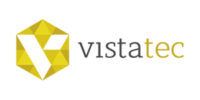Helpful Practices in Preparing Content for Translation
Localization, the practice of adapting content to meet a target market’s linguistic, cultural, and technical requirements, has become a cornerstone of global brand strategy, allowing world-renowned brands to gain a competitive edge through the art of cross-cultural and multilingual communication. This evolution marks a paradigm shift where understanding and embracing the nuances of diverse cultures is not merely beneficial but essential for sustaining relevance and resonance in the global marketplace.
The Evolution of Localization: Beyond Translation
Effective localization transcends mere translation. It involves a nuanced understanding of cultural norms, values, and preferences, ensuring that content resonates with its intended audience. This evolution from basic translation to comprehensive localization and transcreation reflects an organization’s progress through a journey mapped by the Localization Maturity Index. (CSA Research)
For those beginning this journey, the focus might initially be on navigating the basics: understanding the importance of clear, concise language and the technical aspects of internationalization. However, the strategies become more refined as organizations ascend the maturity ladder. Advanced localization efforts emphasize linguistic accuracy, cultural appropriateness, and emotional resonance, leveraging technology and creative transcreation to ensure the brand’s voice remains consistent yet locally relevant.
Embracing Technology in Localization
Advancements in digital technology are revolutionizing the field of localization. Utilizing cutting-edge tools such as AI-driven translation engines and automated workflow systems, organizations can increase the speed and accuracy of their translation processes. These technologies enable predictive typing, consistency in terminology, and real-time collaboration across global teams, streamlining operations and cutting down project timelines. As you integrate these technologies, it’s crucial to balance automation with human oversight to preserve the cultural nuances that software may overlook
Getting Started
As you begin or refine your localization journey, you will likely need to work with a Localization Solutions Provider to translate high volumes of content. This content can range from product and service information to technical manuals, marketing materials, user-generated content, and a more comprehensive array of written, audio, and video content types. They all require a nuanced approach to ensure that the final, translated content your audience sees will be as effective as it is in its original language.
Getting there is challenging. Fortunately, several tips can help you avoid problems. This guidance can also help you prepare content for translation and ensure that your entire content pipeline receives the best treatment to inform and persuade your audience across channels.
1. Set Mutual Expectations for Translated Content
First, and most importantly, work with your translation partner to scope the partnership. Beyond defining the volume of content that can be expected, that also means specifics such as:
- Expected deadlines for delivering translations based on the handover of the content
- Formatting or file type nuances you should follow as you prepare your content
- Supplemental documents your partner may need to improve translation quality (some common examples are shared below)
- Requirements on systems and processes for content delivery
- Expectations on localization: For example, how closely will the translated content remain to the word count of the original content, and is some further transcreation required?
2. Place the Content Within a Larger User Journey Context
In addition to any existing broader localization context, your partner will also benefit from the content’s context in the eyes of your audience. More specifically, they will look for and benefit from information that enables them to understand the context in which the content they are translating will live.
Ideally, that means being able to share any user journey and user flow documents you might already have prepared. If you’re translating a series of technical papers, translators may benefit from knowing the sequence in which the audience may consume them.
3. Prepare and Share a (Localized) Brand Style Guide
Consistency is vital to successful translations, especially at large volumes. Your translation agency will benefit from a comprehensive style guide outlining your needs. Consider elements like your intended tone of voice or details like spelling and capitalizing key brand terms.
At the same time, you cannot assume that your existing brand style guide will precisely match your partner’s needs. Instead, look closely at the existing document and consider what might need adjusting for this audience. Do your tone and brand personality work consistently in new markets? Or do you need to make tweaks that align with your intended positioning in the new market?
4. Work With Your Translation Partner on a Brand Glossary
Beyond the general style guide, it also pays to build a glossary that outlines precisely what terms you tend to use in association with your brand, which becomes especially important at large translation volumes. After all, the languages into which you look to translate your content may have multiple potential words for what you are trying to get across.
To be clear, this is not a task you should undertake alone. Consult with your language service provider to build and maintain the glossary. Once you have it, even as you move to different efforts, the glossary should remain consistent and continue growing over time.
5. Avoid Sharing Draft Documents Unless Necessary
Building a standard workflow for document translations is crucial. At its best, that means ensuring that any content moving on to translation is fact-checked, formatted, and proofread. That way, you minimize any back-and-forth or additional work for content that needs to be refined or reformatted in multiple languages.
Of course, there are some situations where this will not be possible. For example, the translated content will require a format different from its original counterpart. In these exceptions, be as straightforward as possible about what needs to be done beyond moving words and meanings from one language and culture to another.
6. Legal and Ethical Considerations in Localization
Localizing content also involves navigating the legal and ethical landscapes of different markets. This navigation includes adherence to copyright laws, which can vary significantly by country, and ethical considerations around content sensitivity and appropriateness. Ensuring that your localization respects these aspects is crucial for avoiding legal penalties and safeguarding your brand’s reputation. Collaboration with local legal experts and continuous monitoring of regulatory changes are best practices that help maintain compliance and ethical integrity in all markets.
Prepare for Success as You Work With Translation Partners
The correct translation and localization partner can help create excellent translations and more efficient workflows to ensure your content is available in all the languages you need. However, you will still need to establish standard processes and protocols to ensure the process goes smoothly.
The above tips can help these processes. Of course, your translation partner can also help by communicating clear expectations on both sides. Get started by reaching out to Vistatec today. Learn how we work with our partners and how a potential partnership could benefit your translation and localization efforts.

